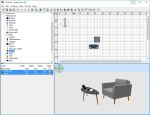- Home
- computer software
- Computer Processor Speed
About computer processor speed
Computer processor speed determines how fast the processing power of a CPU is. A processor, often called the “brain” of a computer is a place where all the calculating and processing performed. The more powerful processor will execute instructions quickly.
As more features and new technologies are added into microprocessor chips, the computing power of a CPU is also increasing significantly. Now it becomes difficult to determine processors power based on speed only as we used to do in earlier times. In fact, the overall performance of a computer is the combination of many factors. But, having well performing CPU is still critical to get better performance from a computer.
Computer processor speed measurement
Processor speed can be gauged by factors such as machine cycle, clock speed and Bus speed.
Machine cycle is the time taken by a processor to complete both the instruction and execution phase of a single task. Modern processors are capable of completing millions and billions of instructions per second depending on the type of processor you have.
The other factor is processor speed. It is also referred as clock speed; the clock is a device that sends series of electronic pulses to the CPU at a predetermined time. These pulses affects the machine cycle of a processor.
Processor speed is measured in megahertz (MHz) and gigahertz (GHz). One hertz is equal to one cycle per second. So, Megahertz means millions of cycles per second, and gigahertz means billions of cycles per second.
Factors affecting computer processor speed
Computer processing capability depends on several factors such as:-
- CPU clock speed,
- Cache memory size and speed,
- The availability of multi core technology
- Front Side Bus (FSB) – this is an interface between CPU and chipsets or memory controllers. 32-bit and 64-bit wide data buses are the main types found in modern CPUs. Actually, 64-bit becomes the main stream in modern laptop and desktop computers. Due to this CPU architecture, application developers are also updating their programs to benefit from 64-bit wide bus architecture.
- - Hyper-threading technology
- - Computer RAM,
- - Hard disk access and rotational speed and other related technologies.
So far, several types of processors are introduced by microprocessor manufacturers which differ in speed, technology and design. Both Intel and AMD developed processors ranges from low end to high end CPU types.
High-end processors are super fast and incorporate new features which are designed for running multimedia programs, video and photo editing applications, engineering programs and other resource intensive programs.
On the other hand, low end processors are meant for basic applications and occasional usage. Low-end or economy processors are cheaper than high end CPUs.
Generally, before choosing any type of processor, you should always remember the factors related with better performing processor and the specific task it is designed for.
How to find your computer processor speed?
If you want to find about your computer CPU speed, Open System by clicking the Start button, clicking Control Panel, and then clicking System (for Windows XP).
On system properties dialogue box, under General tab, you will find about your computer processor type and speed.
For Windows Vista users:-
Follow this route, Control Panel ----> System and Maintenance then click System
For Windows 7, 8 and 10 users:-
Follow this route, Control panel ----> System and Security --->System
Or you can Right Click on My computer Icon and choose Properties (applies for all versions Operating Systems).


